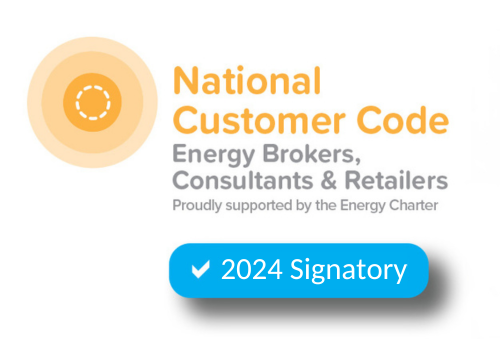If your business is connected to the Energex network via your own dedicated 11kV feeder, recent changes to available network tariffs present a valuable opportunity to reduce electricity costs.
In this article, we break down Energex’s default Tariff 4000, introduce the new optional Tariff 92400, and compare both using a real-world industrial usage scenario. For high daytime-use businesses that power down before 5 PM, the potential savings are substantial.
Tariff 4000 – Energex’s Default Tariff
Tariff 4000 is the default network tariff for large customers on a Connection Asset Customer (CAC) 11kV feeder. It applies automatically unless the customer proactively opts for a different structure.
What’s Changed?
The only change in the 2025 version of Tariff 4000 is the addition of a Connection Unit Charge to the daily charges. The rest of the tariff structure remains consistent:
Tariff 4000 Structure
- Daily Charges:
– Fixed Daily Charge: $98.554/day
– Connection Unit Charge: $7.922/unit/day - Volume Charges:
– Flat energy rate: $1.002c/kWh (same across Peak and Off-Peak) - Demand Charges:
– Monthly kVA demand charge:
> $8.087/kVA/month, based on the highest 30-minute
This structure is simple—but it doesn’t reward businesses that avoid using power during peak periods.
Tariff 92400 – Optional Tariff for CAC 11kV Customers
Tariff 92400 is a new optional tariff also available to CAC customers on dedicated 11kV feeders. It introduces time-based demand pricing, offering opportunities for cost reduction if your business uses power at certain times of the day.
Tariff 92400 Structure:
- Daily Charges:
– Fixed Daily Charge: $66.055/day
– Connection Unit Charge: $7.922/unit/day - Volume Charges:
– Flat energy rate: $1.236c/kWh (same across Peak and Off-Peak) - Demand Charges (all based on highest 30-minute demand in each window):
– Peak Demand (kVA): $6.763/kVA/month
> Applies from 5:00 PM to 8:00 PM weekdays
– Shoulder Demand: (kVA): $4.396/kVA/month
> Applies from 11:00 AM to 5:00 PM and 8:00 PM to 11:00 AM weekdays,
and 11:00 AM to 11:00 PM weekends
– Anytime Demand: (kW): $1.279/kW/month
> Applies at any time during the month
Unlike Tariff 4000, 92400 charges a higher demand during the peak window which is the time that the grid is most stressed with supply & demand, and lower outside of the window.
Tariff 4000 vs Tariff 92400
To illustrate the financial impact, let’s look at an example.
| Component | Tariff 4000 | Tariff 92400 |
| Fixed Daily Charge | $98.554/day | $66.055/day |
| Connection Unit Charge | $7.922/unit/day | $7.922/unit/day |
| Volume Rate (Flat) | $0.01002/kWh | $0.01236/kWh |
| Demand Charge (Anytime kVA) | $8.087/kVA/month | – |
| Peak Demand Charge (kVA) | – | $6.763/kVA (5–8 PM) |
| Shoulder Demand (kVA) | – | $4.396/kVA |
| Anytime Demand (kW) | – | $1.279/kW |
Example: 2,000 kVA / 1,900 kW Site Using 2 GWh per Year
Let’s assume business with:
- Max kVA Demand: 2,000 kVA
- Max kW Demand: 1,900 kW
- Annual consumption: 2,000,000 kWh
- Operating hours: 7:00 AM to 4:00 PM (weekdays only)
This business energy intense operations stop at 4PM, prior to the tariff 72400’s peak demand window, 5pm-8pm weekdays
Monthly Demand Charge Comparison
Tariff 4000 (Default)
- Demand: 2,000 kVA × $8.087 = $16,174.00/month
Tariff 92400 (Optional)
- Shoulder Demand: 2,000 kVA × $4.396 = $8,792.00
- Anytime Demand: 1,900 kW × $1.279 = $2,430.10
Total: $11,222.10/month
Monthly & Annual Savings
- Monthly savings: $4,951.90
- Annual savings: $59,422.80
This customer would reduce demand-related network costs by nearly $60,000/year—just by switching tariffs and avoiding power use after 5 PM.
There are other charges that need to be carefully reviewed, but it’s best to leave that to us.
Is Tariff 92400 Right for You?
If your operations:
- Run mainly during the day
- Shut down or significantly reduce load before 5 PM
…then Tariff 92400 could deliver significant cost savings.
However, these savings depend on your unique demand pattern, meter data, and load behaviour. The difference between a good and bad tariff decision can amount to tens of thousands of dollars per year, sometimes hundreds of thousands of dollars.
Don’t Do It Alone
Network tariffs are complex, and switching without careful modelling can be risky.
At Leading Edge Energy, we help large energy users:
- Analyse historical demand and interval data
- Model side-by-side tariff outcomes
- Manage the application process with Energex and your retailer
Book a free network tariff review with our experts today.
Let’s make sure you’re on the best deal for your business.
—
Leading Edge Energy can help you secure stable, competitive rates so energy price spikes don’t affect your bottom line.
Let’s chat. Call us at 1300-852-770 or email us at info@leadingedgeenergy.com.au.
You may also sign up for an obligation-free consultation by responding to our form. Click the button below.







